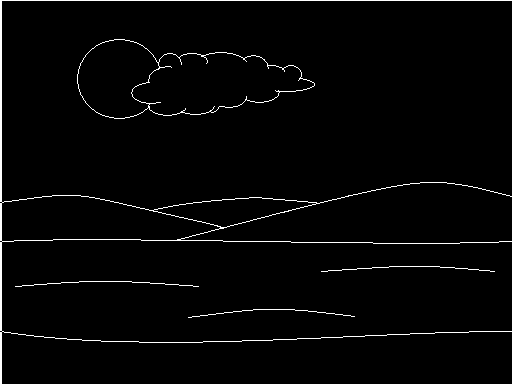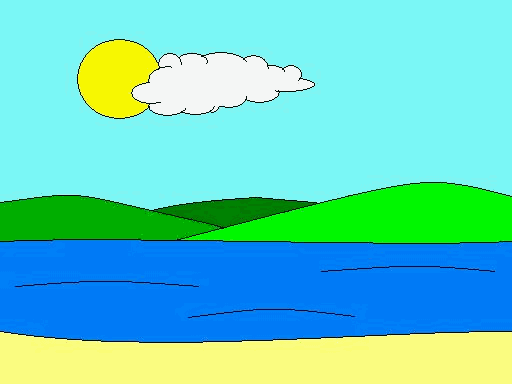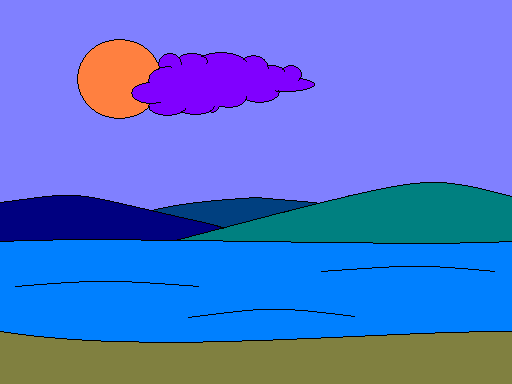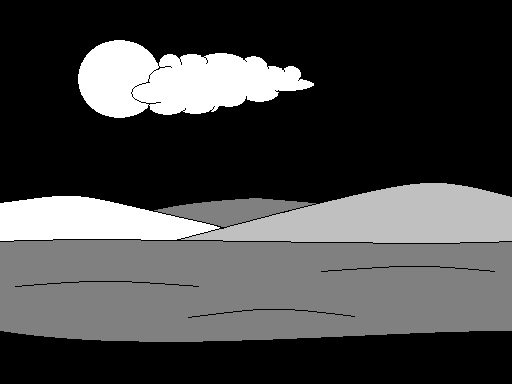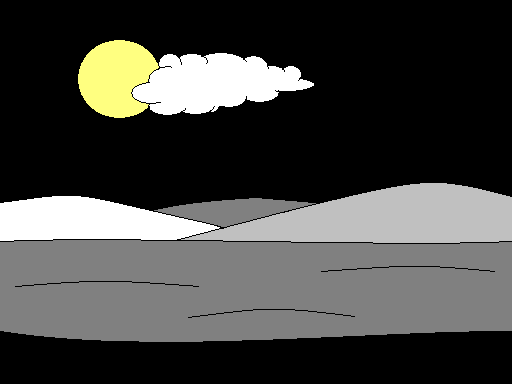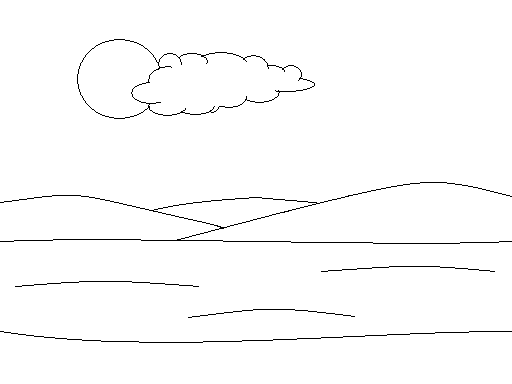 |
|
|
A negative of the initial image lends to perception of a nighttime, rather than a daytime, scene.
|
|
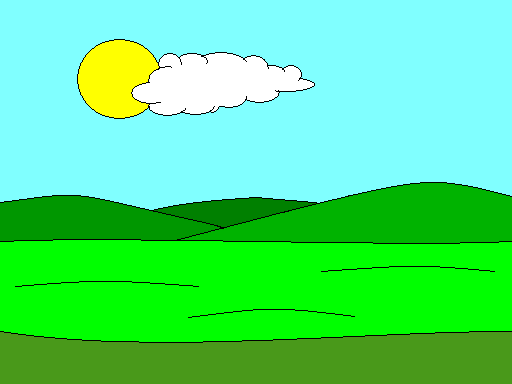 |
|
|
The first in a series of daytime
scenes,
|
By simply changing the color
of the foreground,
|
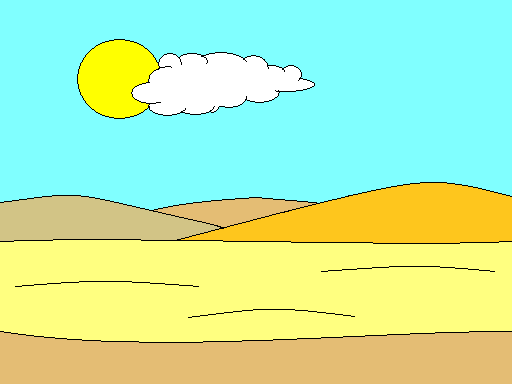 |
|
|
This time, a change in all
the terrain provides a view of a desert,
|
By darkening the desert picture
as a whole, we come up with a nighttime scene.
|
